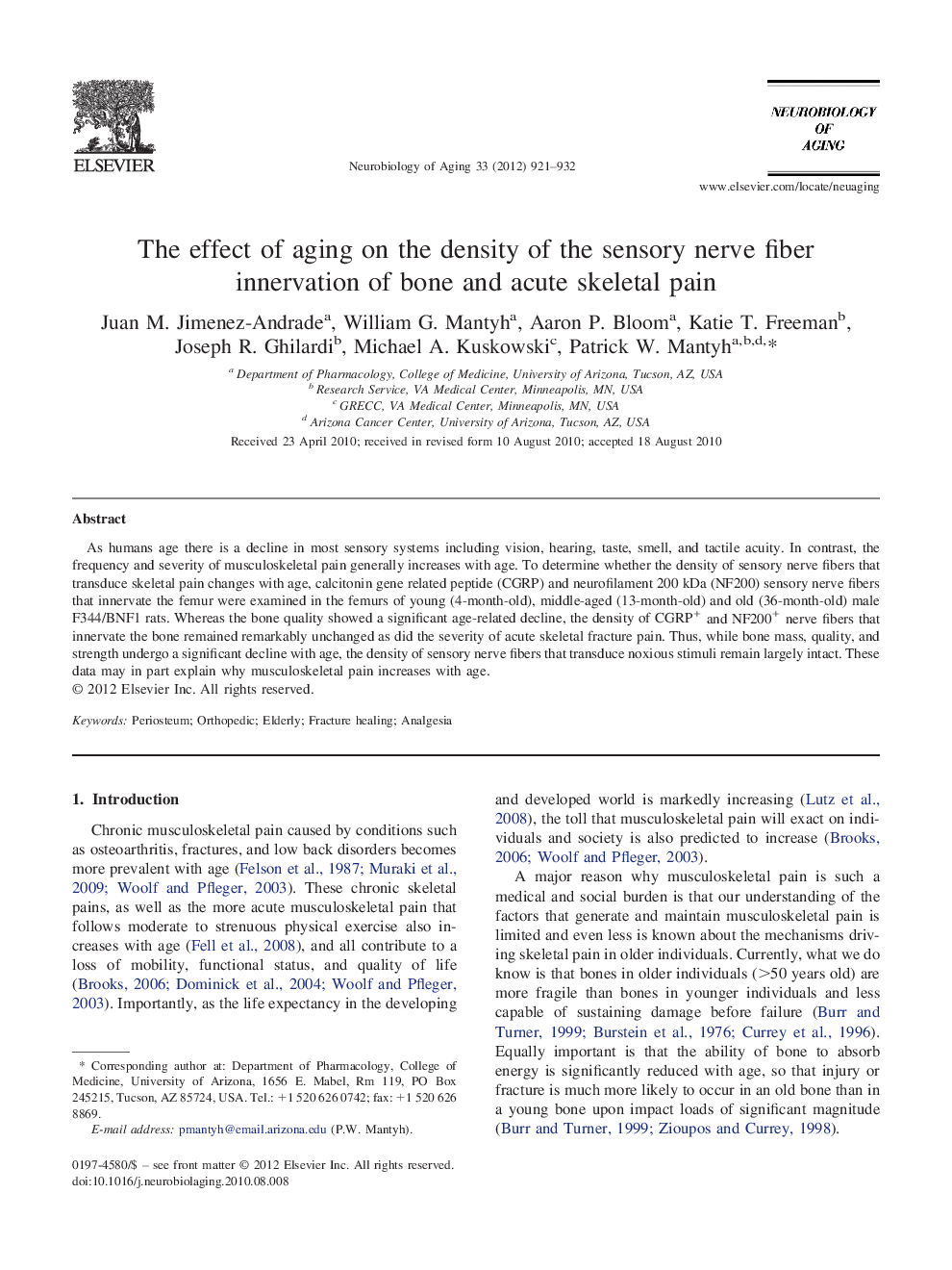| Article ID | Journal | Published Year | Pages | File Type |
|---|---|---|---|---|
| 6809059 | Neurobiology of Aging | 2012 | 12 Pages |
Abstract
As humans age there is a decline in most sensory systems including vision, hearing, taste, smell, and tactile acuity. In contrast, the frequency and severity of musculoskeletal pain generally increases with age. To determine whether the density of sensory nerve fibers that transduce skeletal pain changes with age, calcitonin gene related peptide (CGRP) and neurofilament 200 kDa (NF200) sensory nerve fibers that innervate the femur were examined in the femurs of young (4-month-old), middle-aged (13-month-old) and old (36-month-old) male F344/BNF1 rats. Whereas the bone quality showed a significant age-related decline, the density of CGRP+ and NF200+ nerve fibers that innervate the bone remained remarkably unchanged as did the severity of acute skeletal fracture pain. Thus, while bone mass, quality, and strength undergo a significant decline with age, the density of sensory nerve fibers that transduce noxious stimuli remain largely intact. These data may in part explain why musculoskeletal pain increases with age.
Related Topics
Life Sciences
Biochemistry, Genetics and Molecular Biology
Ageing
Authors
Juan M. Jimenez-Andrade, William G. Mantyh, Aaron P. Bloom, Katie T. Freeman, Joseph R. Ghilardi, Michael A. Kuskowski, Patrick W. Mantyh,
